27 Travel Tips and Fun Facts about Argentina

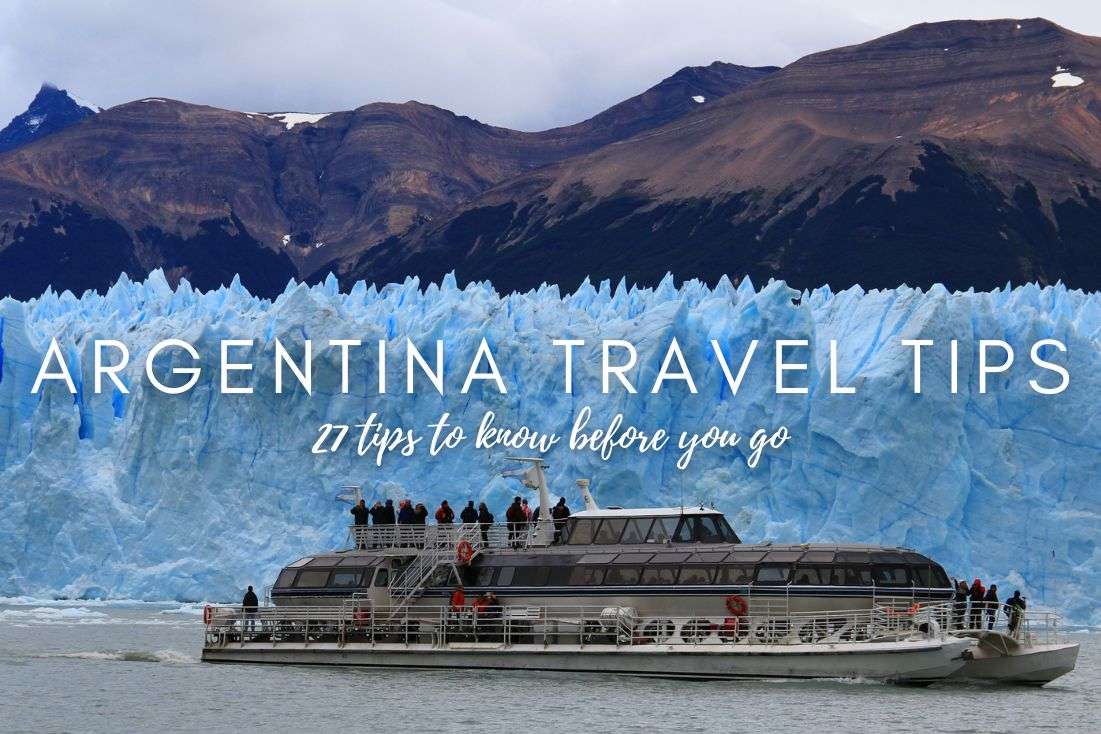
Planning a trip to Argentina? Well then, step right up! I've got an entire list of everything you need to know to navigate this amazing country. Some, I’ve had to learn the hard way, but hey, someone has to do it.
In this article, I'll touch upon everything from the blue dollar market, ordering the right type of coffee, getting around Argentina, and some insight about staying safe no matter where you go. Oh, and also how to recognize if you’re getting flipped off, Argentina style.
Below are 27 tips for traveling in Argentina and some fun facts to make your trip smoother and more enjoyable. Whether you’re exploring the vibrant streets of Buenos Aires or the breathtaking landscapes of Patagonia, these tips will help you feel like a seasoned traveler.
Warning: Whatever you do, here’s a tip you really need to remember: never, ever challenge an Argentine to a steak-eating contest! They’re animals, I tell ya! (see tip no. 7)
1. When to travel to Argentina? March or November
The best time to visit Argentina from November to March. Temperatures here are like a European summer, up to 30°C (86°F). I recommend this period for outdoor activities and hiking. But watch out for December to February when it can get scorching hot. On the flip side, if you're a winter sports enthusiast, head here between June and September to ski the best slopes in South America.
2. Why visit Argentina? Nature, nature, and nature!
Argentina nailed it in the nature department. The landscapes here are truly captivating—stunning national parks, the majestic Andes, and UNESCO World Heritage sites. You can fly through the capital, Buenos Aires, in a day, but then head straight to straight into nature!
The top spot to visit in Argentina is the magnificent Iguazú Falls, the largest waterfall system in the world, right on the border between Argentina and Brazil. Unique landmarks can also be found in Salta and Jujuy (check out my 6-day itinerary for Salta and Jujuy). Don't miss the famous Argentine salt flats, Salinas Grandes, which cover an incredible 6,000 km² (about 2,300 square miles) while also being at an altitude of 3,450 meters (11,319 feet) above sea level. “Wow” was used a lot while we were there.
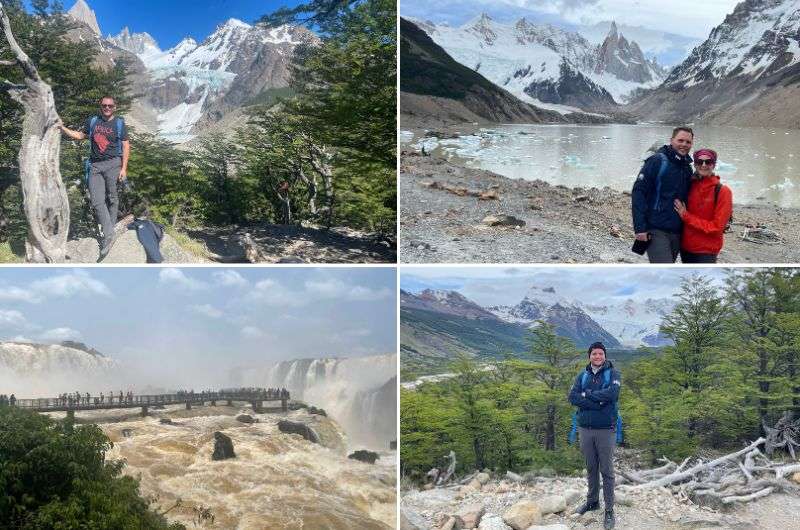
There are plenty of natural attractions in Argentina, one of a kind!
Let me give you two tips on Argentina's hidden gems (I really hate that term, but trust me on these). Don’t miss Quebrada de Humahuaca—a valley with Andean villages rich in indigenous culture and history, plus some mind-blowing rock formations. It was an absolutely breathtaking sight. This place has been a UNESCO World Heritage site since 2003. Nature lovers like me will feel right at home here.
The second gem is Calilegua National Park, home to the highest population of jaguars in Argentina. Here, you can witness a variety of other endangered species as well. Not that we saw any...
Lastly, one of the really popular attractions we heard a lot about whilst visiting Argentina was the dove hunting. Since the dove population in South America is out of hand and has led to issues with farmers losing crops, dove hunting in Argentina is not only an accepted activity but is openly promoted and supported by both the locals and the government. If you're an avid outdoorsman who enjoys dove hunting, Argentina might be a destination to add to your list!
3. No city, no cell signal
Expect limited or non-existent signal outside major cities. In Buenos Aires, Mendoza, Rosario, and other large cities, cell phone coverage is usually very good. On the other hand, in areas like Salta or Jujuy, you might struggle with connectivity and finding information. So, plan your GPS use well and make sure to download offline maps in advance if you’re heading out onto the nature trails.
4. What time do Argentinians have dinner?
One of the big surprises for me was the time Argentinians have dinner. I’d call it almost a midnight snack since they dine after 9:30 pm, and even later on weekends. Don't be shocked if you're the only guest in the restaurant before their usual time. Hey, at least you won't need a reservation.

At the time when the Argentinians were just gathering for dinner, we, like good Czechs, were already washing down our full stomachs with beer
Evening restaurant hours in Argentina: from 8 pm to midnight, some places until 1 am.
5. Don’t get scammed by the taxi drivers in Argentina
Always agree on the taxi fare upfront when taking a taxi in Argentina. There's a common trick where drivers ask you to pay for the entire return trip when they’re driving you somewhere, agreeing to wait and take you back again when you’re done. But then they takes them ages to pick you up for the return trip you already paid for... I wonder why.
Make sure to iron out the details of your taxi ride before you get into the vehicle. If the taxis have a "MercadoPago" sticker, they also accept credit cards.
Average taxi fare in Buenos Aires: USD 0.90 per km
6. One meal is enough to feed two people
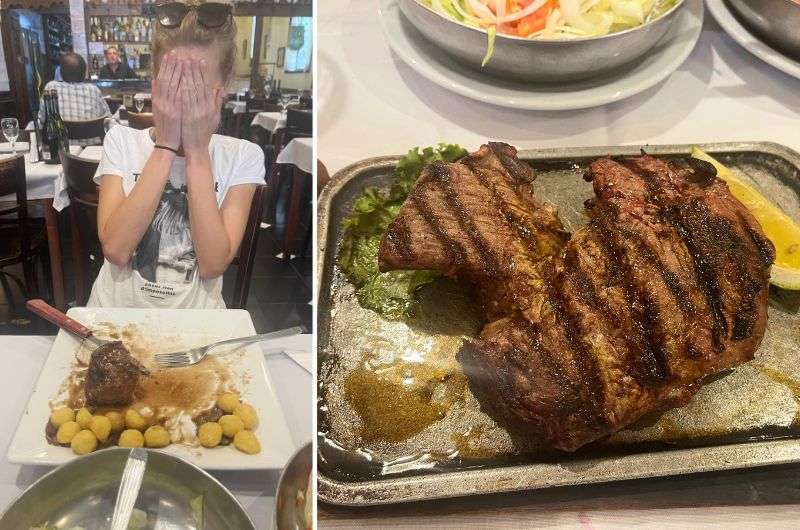
Either you eat the steak, or the steak eats you
If you’re not as gluttonous as a pig, share your steaks with your partners or friends or whoever you’re traveling with. The Argentine standard portion size is a 500g (1.1 lb) steak, which is absolutely fantastic, but for Europeans, it’s a bit too much. My girlfriend often left a full Czech-sized portion after finishing her meal. We then just switched to sharing. It’s actually funny because you can have a meal for two for just USD 22.
7. Fantastic service and punctuality—SURPRISE!
It’s said that Argentinians are usually 20–30 minutes late. Our experience, however, was entirely different and we were pleasantly surprised by their punctuality and the quality of service we got everywhere. The restaurant staff, for example, was friendly and we never had to wait long for anything.
8. Everything is closed on Sundays
When you visit Argentina, don't forget that almost everything is closed on Sundays. Most stores are open Monday to Friday from 9 am to 8 pm and on Saturdays from 9 am to 1 pm. Sunday is a rest day, and there for the shopping options are limited—sucks when you need to stock up on snacks for your hikes! Luckily, most malls don't follow this schedule and stay open much later, and are even open on Sundays. Keep this in mind when traveling to places without malls.
Store opening hours in Argentina: Monday to Friday from 9 am to 8 pm, Saturday from 9 am to 1 pm. Closed Sundays.
9. How long does it take to get to Argentina?
The total flight time from the USA to Argentina is around 11 hours, and from Europe, it can even be over 15 hours. Many flights from Europe to Argentina include layovers, so you might spend considerably more time traveling. We flew with Air France in premium economy on the newest Airbus A350 in 2024 (from Europe). We covered 11,000 km (6,900 miles) and the journey took 13 hours. On the way back, we got lucky—probably thanks to favorable air currents—the flight only took 12 hours.
10. Can I speak English in Argentina?
While the official language of Argentina is Spanish, you can get by just fine with English. Be prepared though, because you might encounter a mix of Italian, Brazilian Portuguese, and English in some places—you'd think you’re in Babylon! Argentine Spanish has some differences from standard Spanish, including unique vocabulary and occasional indigenous expressions.
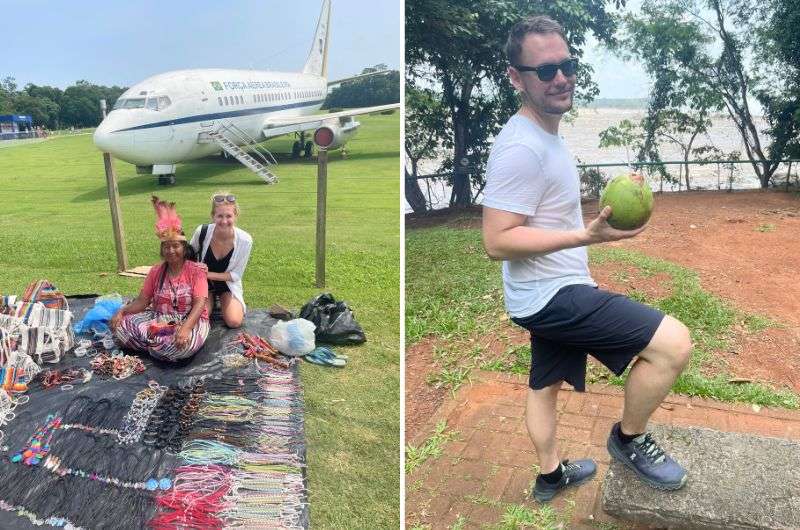
Some of us travel to meet people from different cultures. Others of us travel to sample food from around the world... that coconut was really good!
Before traveling to Argentina, I definitely recommend learning at least a few basic Spanish phrases:
- Hola – Hi.
- Buenos días – Good day.
- Buenas tardes – Good evening.
- Hasta la vista or Adiós – Goodbye. (And yes, you can say “Hasta la vista, baby” for extra flair. Just don’t blame me if you get strange looks.)
- Por favor – Please. (Useful for when you’re pleading for that last empanada.)
- Gracias – Thank you.
- Perdóname – Excuse me. (Perfect for when you bump into someone because you were too busy gawking at the scenery.)
- ¿Dónde está el baño? – Where is the bathroom? (Arguably the most critical phrase. Trust me, you don’t want to be caught without this one at the wrong time.)
- No hablo español muy bien – I don’t speak Spanish very well. (Saying this can earn you some sympathy points and maybe even a helping hand.)
- Una cerveza, por favor – A beer, please. (Vital for socializing and cooling off in the Argentine heat.)
- Me estoy perdiendo – I’m lost. (Not sure how you’d follow-up though, if this is the only thing you know how to say... maybe ask for a beer?)
11. What is the best way to travel in Argentina?
The best way to travel in Argentina is to rent a car; only then will you see as much as possible, especially if you want to experience Argentina’s stunning nature. Being the king or queen of your travel times is the best thing you can do for yourself.
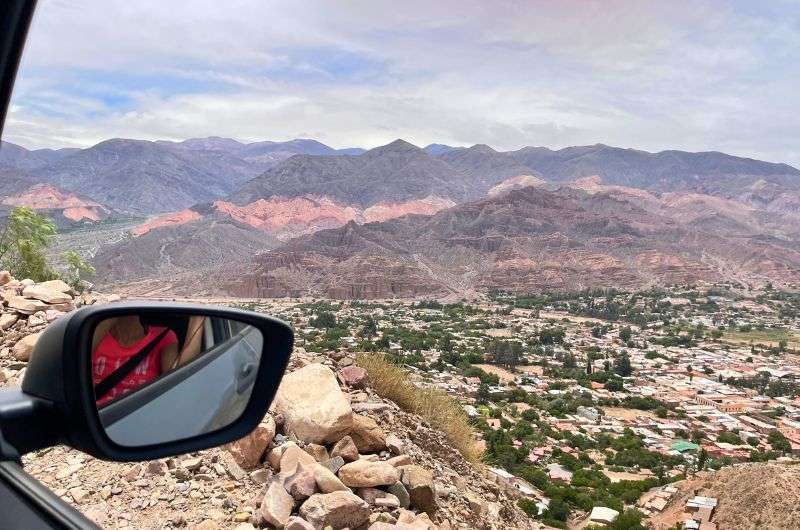
Here we pass through Garganta del Diablo aka the Devil's Throat
If you’ve looked at a map of Argentina recently, and actually want to explore this incredible country thoroughly, you know you’ll need to hop on some domestic flights due to the vast distances. I don’t know about you, but driving 3,000 km (1,864 mi) from Buenos Aires to El Calafate isn’t something I was want to do. And if I can recommend anything—the bigger the 4x4 SUV, the better, because some roads can be quite an adventure.
Also, keep in mind that renting a car in Patagonia can be expensive, but there are places like El Calafate where they have reasonably priced taxis or a network of buses. Sometimes, you can manage without a car. You can also explore the main tourist attractions in Buenos Aires on foot. The wide sidewalks, benches, and some pedestrian-only streets make it perfect for walking (but remember, you only need a day there).
12. Is Buenos Aires safe at night?
Buenos Aires is safe at all times of the day if you stick to popular and tourist areas. It’s considered one of the safest cities in South America. There’s also a reason it’s called the “city that never sleeps”, so you’ll never feel like you’re alone (in a good way, not in a creepy way). And it’s true—you’ll hear music playing all night long. Which is why it’s better to stay outside the center, like at the Palladio Hotel Buenos Aires – MGallery.
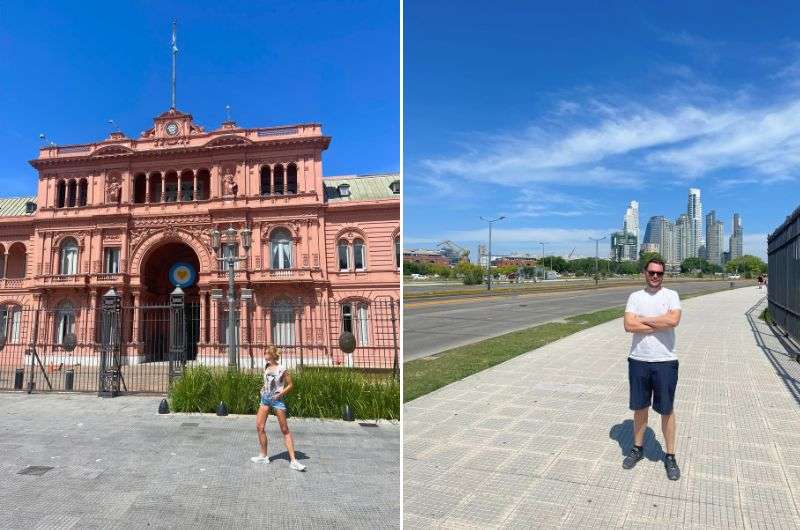
We had no need to constantly look over our shoulders. Tourist areas of Buenos Aires are safe!
However, it always pays to be cautious, opportunists exist and if you’re asking for it, well, don’t be surprised. In Argentina’s capital, be more alert in the Palermo district, on Florida Street, and at the Retiro bus station. But hey, you’ll find weird people everywhere.
13. Do Europeans need a visa for Argentina?
Europeans can travel to Argentina without a visa for up to 90 days. All you need is a valid passport. This makes it easy and hassle-free for European tourists to enter the country. Just like we did, you only need to pass through immigration control at the airport, no other special procedures. Americans follow the same visa-exempt rules.
At the immigration desk at the airport in Buenos Aires, we were asked to present a return ticket and fill out an immigration card, which recorded our entry date. We had to keep a copy of the card and return it when leaving Argentina.
You can also be asked to provide proof of sufficient funds. Usually, showing you have USD 50 per day or an international credit card should suffice.
14. Can you drink tap water in Buenos Aires?
You generally don’t need to worry about drinking tap water in Buenos Aires, but it’s recommended to drink filtered or bottled water. Hotels often provide it for free in your room, so if you’re worried about a stomach bug ruining your Argentina vacation, stick to bottles.
Argentina money facts
For a full run-down about money in Argentina, how to deal with the inflation, and what the heck blue dollars are, read my Money in Argentina article.
15. What is the blue dollar currency?
In Argentina, there’s a black market for foreign currencies known as the "blue market," where you'll find the blue dollar. This is an informal term for US dollar bills that circulate at a much higher exchange rate than the official Argentine currency (the Argentine peso).
Any official exchange center (bank or Western Union) will give you the standard exchange rate. For the best exchange rate for the foreign currency you bring, you’ll want to go to the blue market. Which begs the next question...
16. Is the blue dollar in Argentina legal?

It’s not illegal but it also sort of is...
Don’t worry, if you’re buying or using blue dollars in Argentina, you’re not doing anything illegal (well...); it's an accepted way of life. While in many countries this might be considered a “black market,” in Argentina, it’s not technically legal or monitored by the authorities, but it operates openly and is considered routine.
On my travels, I usually avoid any illegal activities. However, Argentina is a unique case, and I’d call this black market more of a gray zone. Or shall I say, a blue zone. And I happily participated, getting backpacks full of pesos. That took a while to get old.
17. Feeling rich with a stack of banknotes
The money system in Argentina is wild. When you exchange dollars, you get so many Argentine peso banknotes that you won’t know what to do with them. Sometimes you want to exchange even more, but you can’t because they’ve run out of banknotes. Plus, a million pesos can weigh about 0.5 kg (1 lb). Better bring a backpack for that.
The number one question we kep asking each other in Argentina was “How many rolls of cash do you have with you? Will it be enough?”
Argentina exchange rate: 1,000 Argentine pesos = approximately USD 1.12 (May 2024)
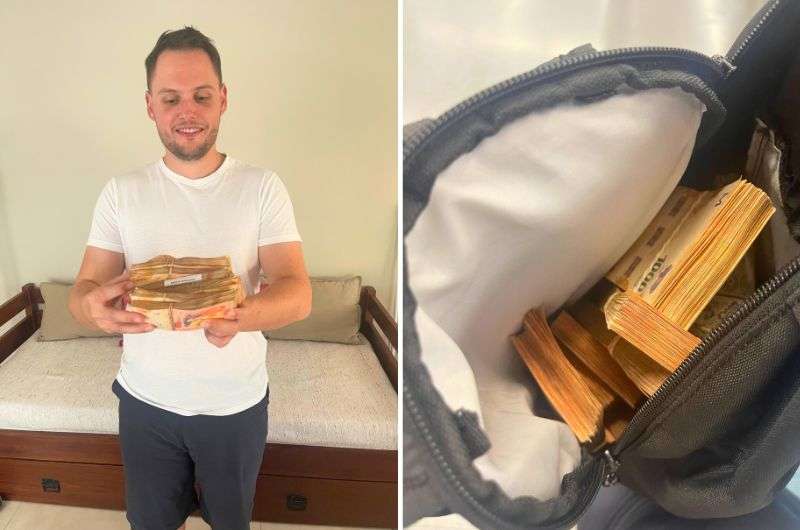
I felt like a mob boss with a backpack full of bills!
18. Where to exchange money in Argentina?
When you arrive in Argentina, exchange “blue dollars” by heading to the street and finding “arbolitos” or “cuevas” that’ll give you about three times the official exchange rate for your US dollars. It’ll feel strange at first, but by the end of your vacation in Argentina, it’ll be second nature.
"Arbolitos" are those folks you’ll see on the streets, repeating "Cambio! Cambio!"—they’re your go-to for exchanging cash at the best rates. Then you've got "cuevas," the unofficial exchange houses where you can swap your crisp US dollars for a heap of pesos.
Arbolitos usually won't do the exchange right there on the street. They'll guide you to a nearby location, like a shop or a cueva, where the exchange can be done more discreetly. So, when you spot an arbolito, follow their lead, but stay alert and be sure to check the rates online beforehand to avoid any scams. You can ask your hotel concierge for advice about finding the best cuevas if you feel weird just heading out and winging it.
19. How much can I withdraw from an ATM in Argentina?
Using ATMs in Argentina is a bit of a nightmare and should only be used as a last resort. You’re looking at withdrawing a measly 10,000 pesos or less per transaction, which is about USD 22. Hilariously, ATM fees can hit you for USD 10 or more each time! So, unless you're into financial masochism, save the ATMs for emergencies. Pro tip: bring US dollars and swap them at cuevas (informal exchange houses) for a way better rate. Trust me, your wallet will thank you.
20. How much do you tip in Argentina?
In restaurants in Argentina, it's customary to leave a 10% tip, but it's not mandatory. If you encounter bad service, just don’t leave anything at all if you don’t feel like it. This isn’t the US!

We took a helicopter to fly over Iguazu Falls
Taxi drivers in Argentina don't usually expect a tip, but we left an extra 5% when they helped us with our luggage.
For bellhops in hotels, it's appropriate to tip around 500 to 1,000 Argentine pesos ($0.5 to $1) per bag. You can give a similar tip to housekeepers.
>> Speaking of hotels, I can’t help but plug this amazing place we stayed in: Loi Suites Iguazu Hotel. Those pools with river views in the jungle were the perfect place to start and end our days in Iguazu. Seriously epic! <<
- Tipping in restaurants: Around 10%
- Tipping in taxis: At your discretion
- Tipping bellhops: 500 to 1,000 Argentine pesos per bag
21. What is the best way to pay in Argentina?

In Argentina, you can pay by dramatically pulling out a stack of pesos from your pocket, like the Godfather
Definitely pay in cash in Argentina when you can, specifically with pesos you get at the "blue rate”. The official currency in Argentina is the Argentine peso, you'll get the most bang for your buck by exchanging US dollars unofficially on the so-called blue market. You’ll need to hit the streets and find “arbolitos” (people trading on the black market) for the best exchange rates for your US dollars.
In hotels, remember to pay in the local currency (Argentine pesos), whether in cash or by card—MasterCard and Visa should be using the MEP rate, which is similar to the blue dollar rate. Buy you’ll need to check to make sure you’re getting the right rate. If paying in cash, also check the rate and pay with pesos you got from the arbolitos.
>> The best hotel we stayed at in Argentina: Loi Suites Iguazu Hotel <<
22. What is the inflation rate in Argentina?
As of January 2024, inflation in Argentina has reached an astonishing 254.2%. This might give you an idea of how navigating the Argentine economic landscape can be quite the adventure. I’ve put together an article just about money in Argentina, so make sure to read up on that before you go. Argentina has the second-highest inflation rate in the world, with Zimbabwe taking the top spot at nearly 561%.
23. Is it better to use cash or credit card in Argentina?
Cash, cash, cash—cash is king in Argentina. This is primarily because of the blue dollar. Just carry US dollars and then splurge like a rich btch with stacks of banknotes you pull out from your backpack (seriously, you’ll need a backpack)! For hotels, it's always good to pay in the local currency, either with cash or by card (MasterCard and Visa give a special rate that’s like the blue rate—make sure to check this is still the case before you go using your card).
Argentina fun facts
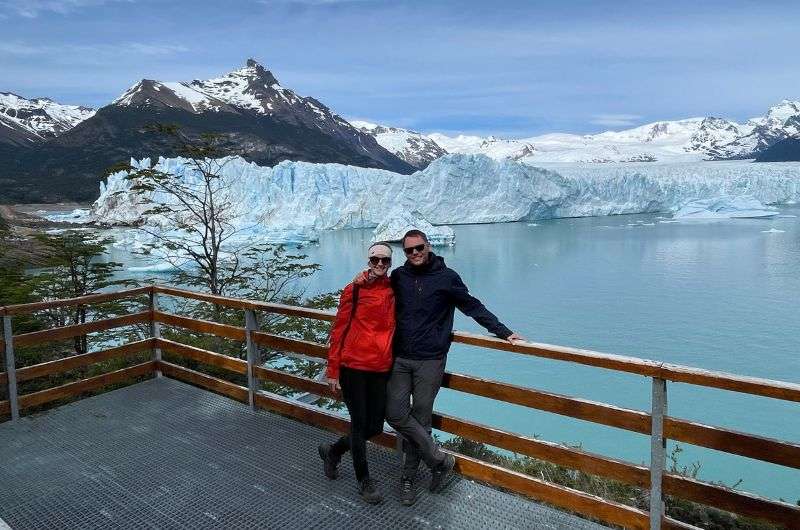
Thank God Argentina has a lot of great qualities to make up for the disgusting coffee
24. Argentine coffee? A total letdown!
Argentina has a rich coffee culture, so you’re excited about drinking the coffee there, right? Well, if you thought you'd taste some great coffee in Argentina, think again. We didn't find any. One of the reasons why coffee in Buenos Aires was terrible might be the quality of water used to make it. Thank goodness for Starbucks (yes, I said it).
If you're still brave enough to try coffee in Argentina, here are some terms you’ll need to navigate the murky waters of Argentine java:
- Cortado—Espresso with a little warm milk. It’s the way most Argentines drink coffee.
- Café con crema—Coffee with a bit of cream.
- Café con leche or mitad y mitad —A 50/50 coffee-to-milk ratio. Perfect if you can't decide whether you want coffee or a glass of milk. Not to be confused with a latté, which is more milk than coffee.
- Capuchino—The closest you’ll get to an Italian cappuccino, but don’t get your hopes up too high. They like to serve it in a glass cup with cinnamon or cocoa on top. Italians are appalled, I’m sure.
- Lágrima—The closest you’ll get to decaf coffee. Or as I like to call it, coffee’s sad, lifeless cousin. It’s a drop of espresso in milk.
25. Argentina’s the second largest producer of Yerba Maté
Yerba Maté is a traditional South American beverage made from the dried leaves and twigs of the Ilex paraguariensis plant, a species of holly native to South America. Argentina is the second-largest producer of this magical indigenous drink in the world.
Naturally, we couldn’t pass up the chance to try it. The holly leaves were sweetish, fresh, and slightly bitter. My girlfriend liked it, I was less enthusiastic. I thought it tasted sort of like someone steeped a hay bale in hot water. But hey, to each their own!
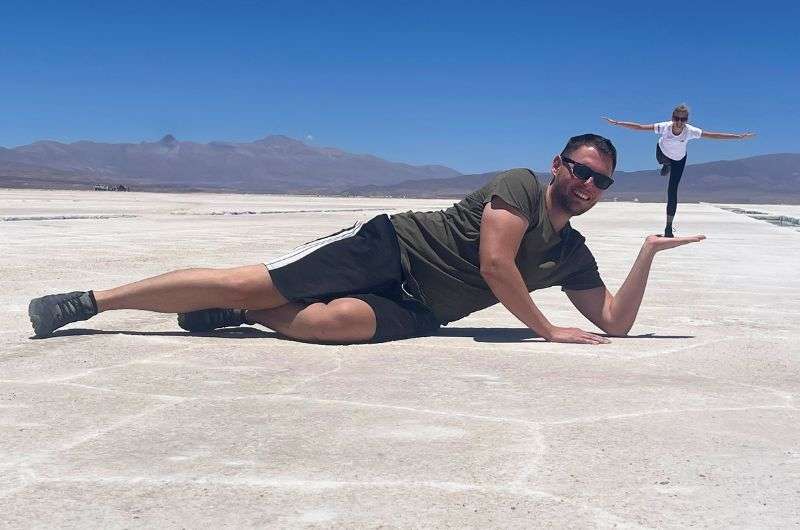
Argentina is also a number one producer of pretty awesome photos! Especially in Salinas Grandes
Fun fact: Did you know Lionel Messi drinks Yerba Maté right before his matches? You can test out his theory before you head out on some hikes, like in Los Glaciares National Park. Let me know in the comments if you were suddenly stronger/faster/less tired! I’ll pass though.
26. What is considered disrespectful in Argentina?
In Argentina, some unwritten rules and etiquette may differ from your own country. I’d say steer clear of these behaviors and you’ll be ok:
- Interrupting: Never cut off an Argentine mid-sentence—big no-no! Conversations flow here, and interruptions are plain rude.
- Better not play with fire: The USA and Brazil are Argentina’s rivals, so comparing them to each other is a quick way to ruffle feathers. Just don’t go there if you want to keep things friendly.
- Eye contact: Hold off on direct eye contact until after greetings. Jumping the gun can seem confrontational.
- Embrace the bad jokes: Mild body shaming jokes are a thing in Argentina, so don’t be offended by the offensive humor. Also, it’s not considered inappropriate for men to openly flirt with women, so just take it in stride. “Hey, beautiful lady!” isn’t really that bad, is it?
- Thumbs-up: Careful with this one; it can be vulgar, though in some situations, thumbs up still just means thumbs up. Stick to a smile and nod to play it safe.
- Sensitive Topics: Steer clear of politics, religion, or the Dirty War unless you know your audience well. These topics can hit a nerve. You wouldn’t want the nerve to then hit you!
- Malvinas: It’s a good idea to refer to the Falkland Islands as the Malvinas when in Argentina. The dispute with the UK is a sensitive issue for Argentines.
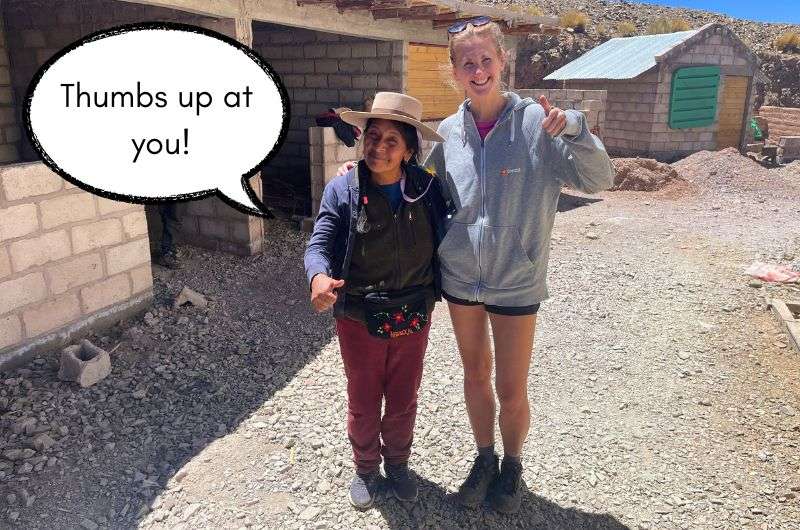
Did she approve or did she not...?
27. What does Argentina hand gesture mean?
Now that you know what is inappropriate for you to do in Argentina, it will likely also come in handy to know what various hand gestures mean... when done to you. Because you may receive some of these with a smile thinking it’s all fun and games, when in reality, you’re getting flipped off.
Popular Argentine hand gestures and their meanings:
- Palm and fist gesture: Smacking the palm of your left hand with your right fist says “I don’t believe what you’re saying.”
- Hand swipe under chin: This move signals the speaker’s got nothing left to say, though they usually keep talking anyway. It can also mean they’re flipping you off... you’ll probably be able to tell based on their general attitude.
- Flicking the hand under the chin: This gesture means “I don’t care”or “I don’t know, get lost.”
- Pinching fingers together (fingers and thumb together and point them upward): This is a go-to move to show complete disbelief. It’s like saying, "What the hell is wrong with you?!"
- Patting your elbow: You are getting called a cheapskate, my friend.
This post contains affiliate links. I earn a small commission if you make bookings through my links, at no additional cost to you. Thank you for your support!


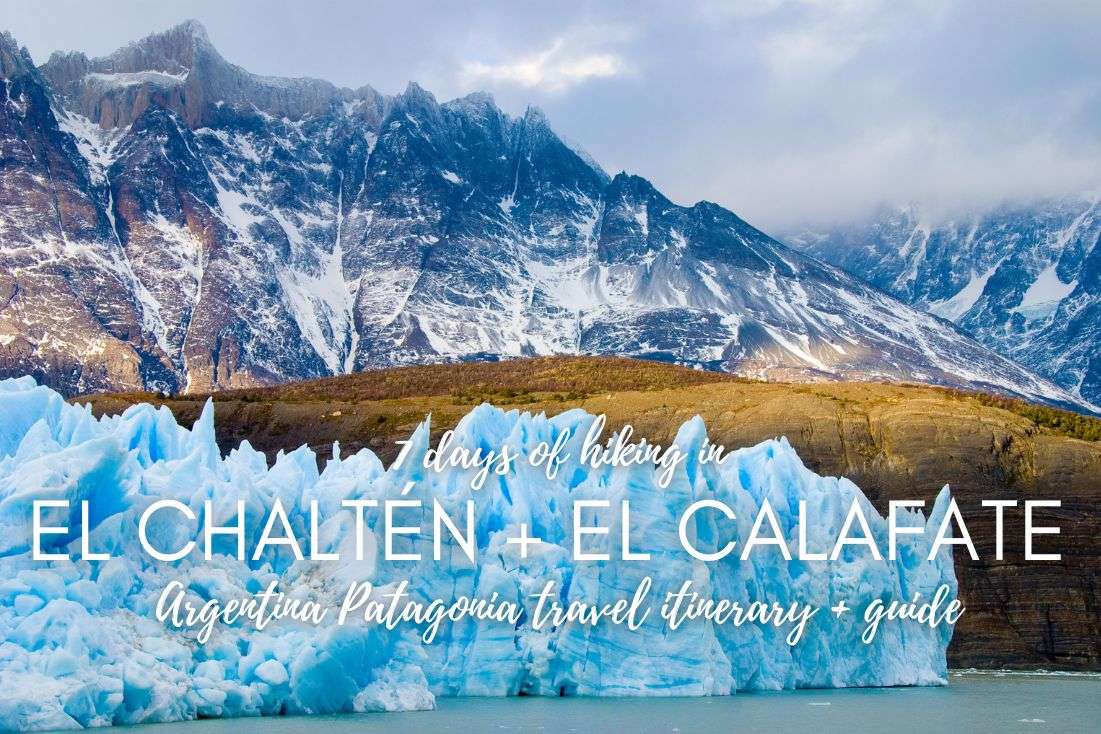
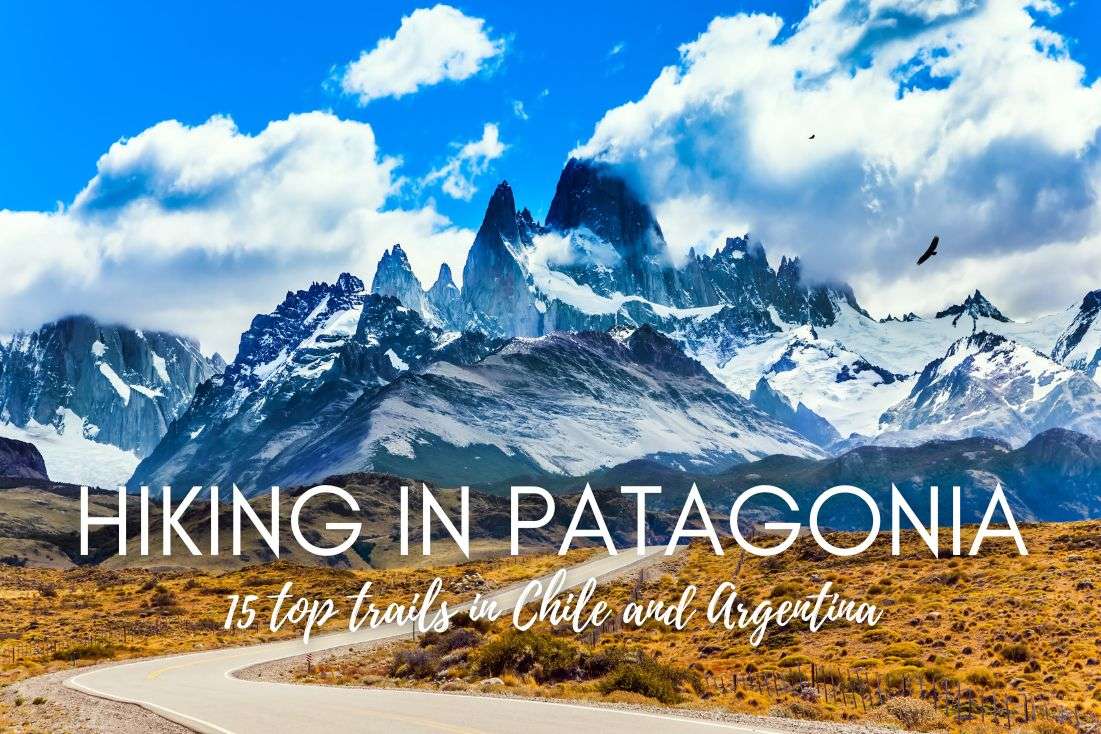
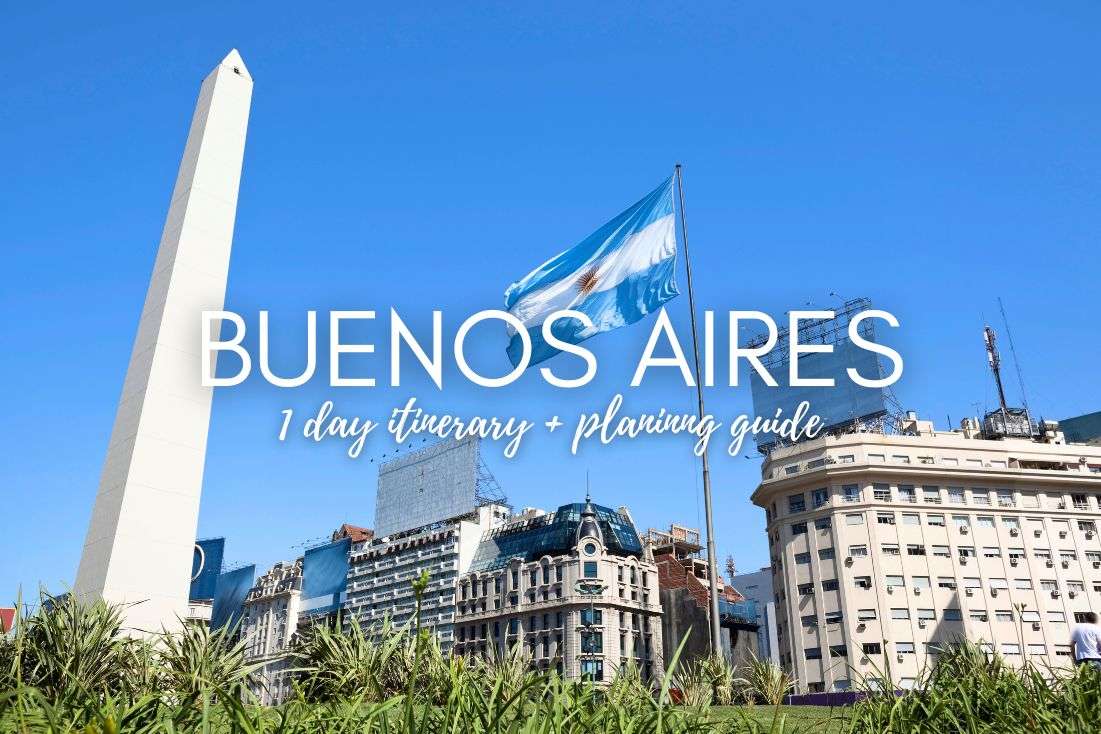





Comments | Thoughts? Give us a shout!